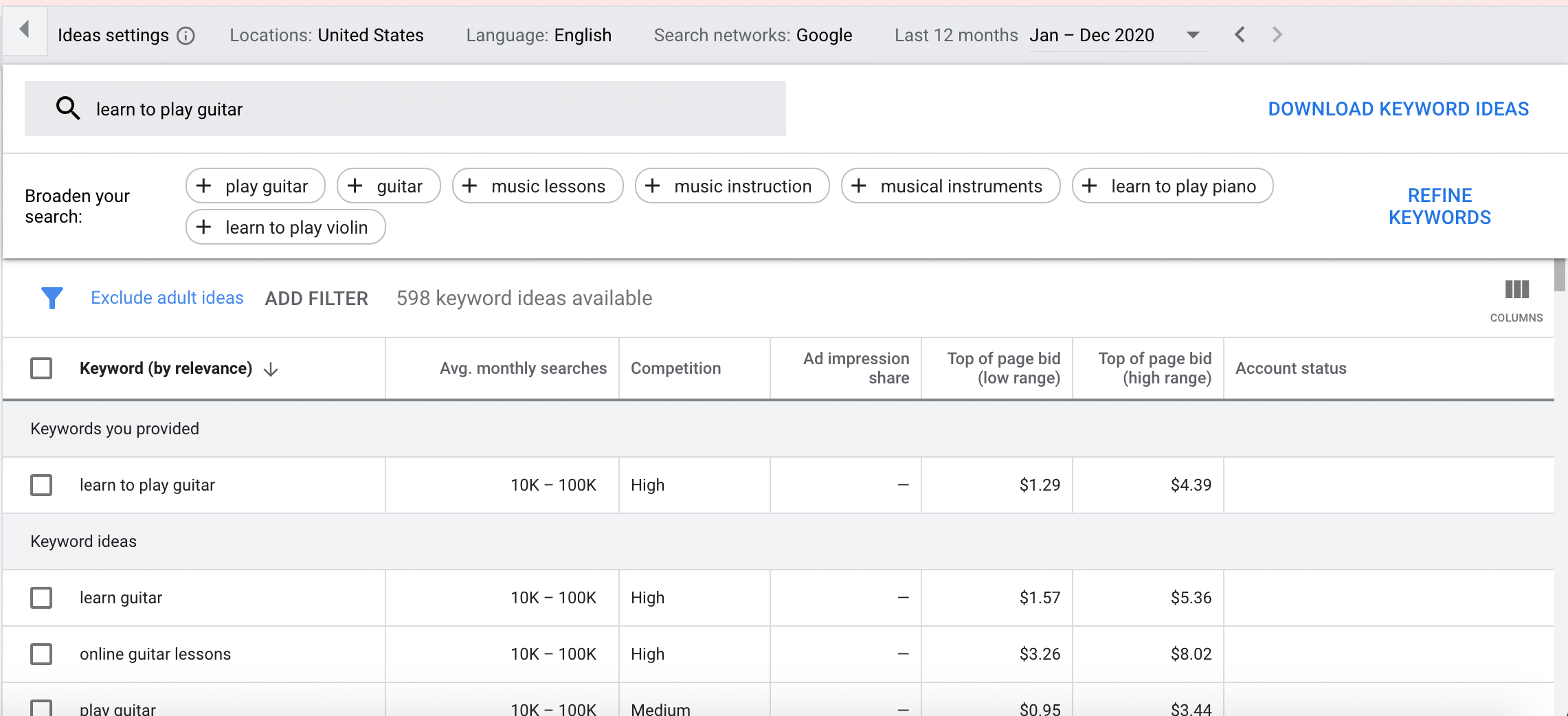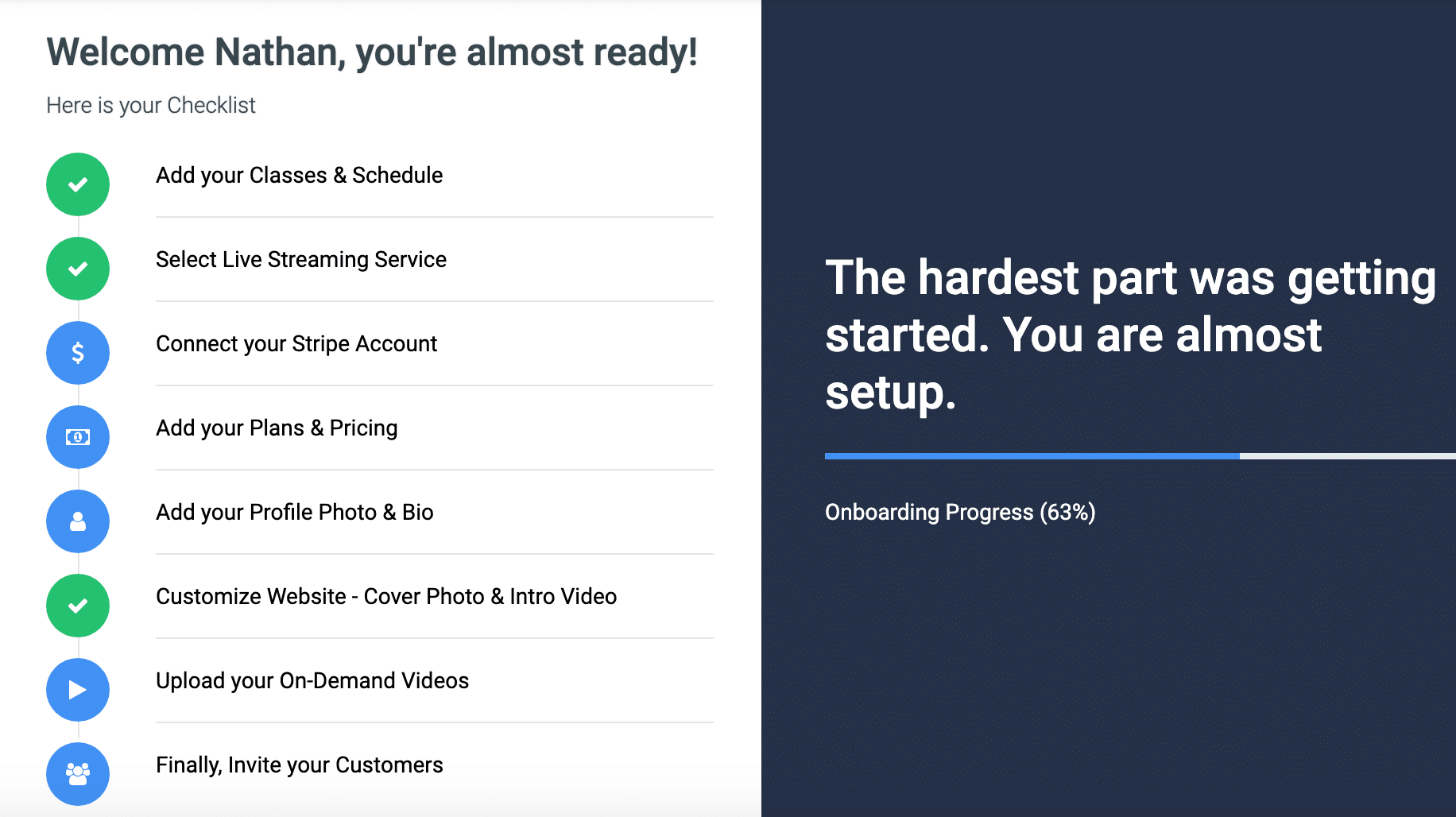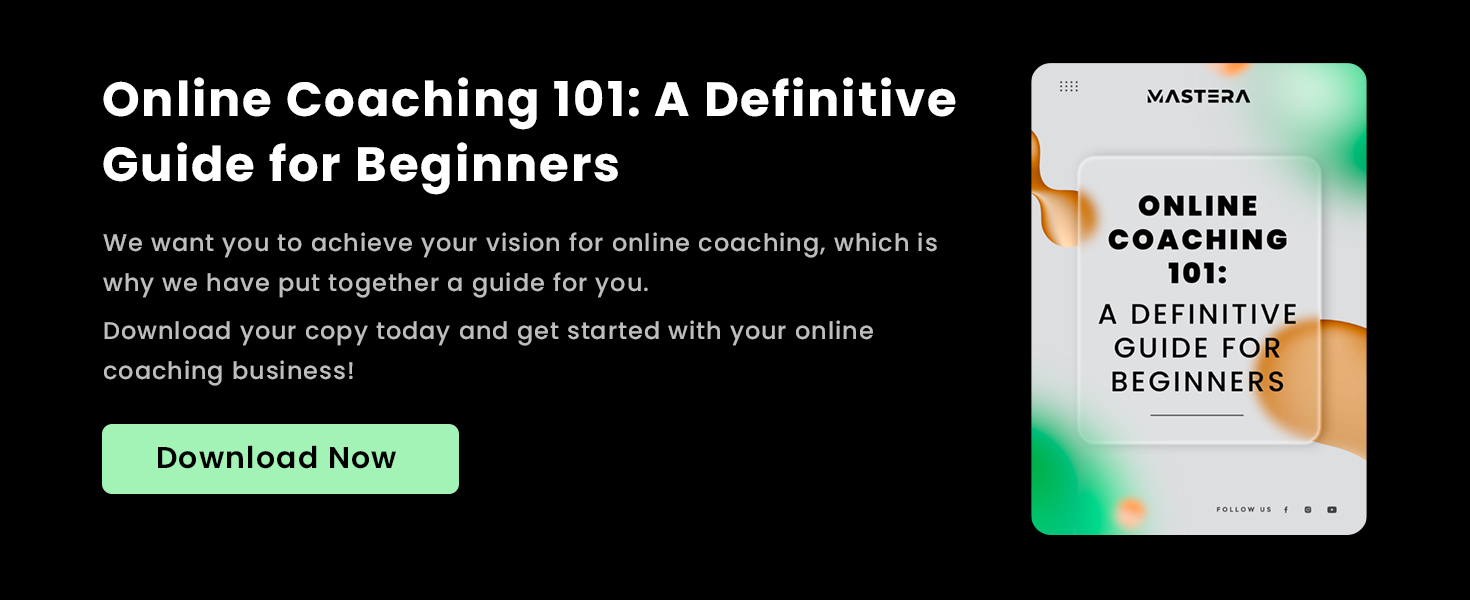Hoping to share your talents with others, but aren’t sure where to start? Not a problem. Online coaching, training, and education have been growing steadily for years, meaning that not only are there lots of exciting tools and resources available to help you be successful, but there’s never been a better time to get started.
The global market for online education reached $255 billion in 2017 and is now expected to grow over $375 billion by 2026. Learningnews.com
We are invested in helping you achieve your vision for online coaching, which is why we have put together 5 action items that you need to take in order to lay a solid groundwork and maximize your potential to start an online training business.
How To Start an Online Training Business? [5 Important Tips To Get Started]
 1. Study your audience
1. Study your audience
The first thing you should do when getting ready to start an online business is to study your potential audience. As someone with extensive knowledge of your subject matter, you are likely already familiar with the types of people who would benefit from your teaching.
However, it is still worth conducting research to find potential customers you may not have considered.
There’s a few different types of market research you can perform, but those listed below are often most effective in an online setting:
- Keyword research: Google and other search engines provide keyword tools that allow you to see what kinds of keywords your audience is using to find people like you. Although some will be obvious such as ‘learn to play guitar,’ others might not occur to you unless you conduct research.
- Find existing communities: For every niche, there is an online community waiting to be tapped into. Look around for existing communities around your area of expertise and listen to what they are saying. These types of people might be exactly who you want to target, so finding out how they think can be invaluable. Facebook, Reddit, and LinkedIn are just a few options for finding these communities online.
- Listen for pain points & opportunities: Another thing the internet is good for is expressing your disdain or disappointment with a potential product or service. Look up your competition or similar businesses on social media and keep an eye out for these pain points, as these can be used to highlight how your solution is up for the challenge and create potential clients.
Once you have a firm understanding of who your audience is, how they operate, and what they are looking for in an online training program, you can move on to your next step. If it helps, you can make a few (1-5) basic personas based on your potential audience to get in the right mindset.
Make sure to spend adequate time on this step, as it will dictate how successful the following actions will be.
2. Solidify your unique value proposition
With a better awareness and understanding of your audience and their needs, it’s time to solidify your unique value proposition, i.e. what sets you apart from the competition. You likely already have an idea of what you believe sets you apart, the challenging part is figuring out the best way to convey that to your audience.
The way to differentiate is to think about How, What, and Who – how you are doing it, what you are doing, and who you are doing it for. Below are a few suggestions that will help you solidify your value proposition and highlight why you are the right choice for them:
- Be exact: Try to narrow down your value proposition into the shortest and most direct form and start from there. You can always back this up with further evidence, but this ‘elevator pitch’ should be enough to hook your audience.
- Be compelling: You know that what you do will help your audience achieve their goals, but how do you get this message across? By finding what compels them and focusing on that motivation to push them in the right direction.
- Be different: As you begin speaking with your target audience, you will want to have a list in your mind of what you do vs. what your competitors are doing. This way, you can point out what makes you different and, more importantly, why that matters. This difference can be in how you teach, your process, and who you are catering to.
Of course, it’s one thing to understand the exact, compelling nature of your unique value proposition, it’s another to get that message across to your customers.
For example, if you are a chef and your specialty is pasta, you want to make that front and center so that potential customers know what you’re about. If it’s not for them, they’ll know right away, but if it’s what they are looking for, they’ll be pleasantly surprised.
Next, we will discuss how to create an online content plan that meets your customers where they are and delivers the unique value of your offering.
3. Create an engaging online content plan
Now that you know who you are targeting and the value that you can provide them, the next step is to create the online training content that reaches those goals.
The good news is that by taking these steps first, you are already giving yourself a leg-up. That said, there are still a few best practices you can follow when planning your content to make it as engaging as possible. Such as:
- Design for the internet attention span: One of the best ways to create engaging content is to provide instruction through small, bite-size programs and educational material. For instance, there is a sharp drop-off for online video after 6 minutes, proving that short and sweet is the way to go.
- Get straight to the point: There is a lot of fluff in online classes and training courses that often leads students to skip sections or watch videos at 1.5 to 2x speed. Rather than waste their time, cut out the fluff and get straight to the point in order to be as engaging as possible.
- Push them to actively learn: Video and online classes can be an active process or feel dull, depending on how you approach them. If you can add in various visual queues, built in questions, and other concepts to push your audience to be active participants, they will stay engaged and retain more in the long run.
- Establish a flow: When creating your content plan, it is important to think of it in its entirety. This way you can establish a flow that they can follow and get the most out of their training or coaching sessions.
These are just a few suggestions, but we encourage you to hone your own voice to keep your customers engaged. After you begin laying the groundwork, the rest will start to fall into place, but these should be your goals for creating an engaging workflow.
You may also like:
- How to Build and Scale Your Video-On-Demand Fitness Business?
- How To Price Your Online Course [Quick Guide To Pricing Classes]
4. Make your tools work for you
Even the best market research, content plan, and unique value proposition won’t guarantee a successful online coaching business. However, with the right tools at your disposal, you can turn these ideas into concrete processes that solidify your business as a force in your particular specialization or industry.
Mastera provides a variety of different options to accomplish these objectives. See below how we can help you out:
- On-demand video: On-demand videos put the ball in your customer’s court, allowing them to learn at their own pace and jump from topic to topic as they see fit.
- Programs: If you are more interested in creating a lesson plan or a set flow for your videos, programs are perfect for exactly that. Have your customers sign up for a program and unlock videos as they go, giving you the chance to dictate their experience.
- Online classes: In addition to on-demand videos, you can host live-streamed classes through your Mastera site to work directly with your students. We can’t cover everything about online classes in this article, but they have repeatedly been seen as a highly effective way to train, teach, and coach.
- 1-to-1 teaching: For students that need a more personalized approach, personal training can be an excellent way to connect with them and provide the focus they need. Mastera allows you to dictate the hours that they can book with you, allowing you to control your schedule while still being available for them.
- Supplemental Material: Along with on-demand videos and online classes, your Mastera site includes places to add PDFs, blog posts, and other types of supplemental material that can take their learning experience to the next level.
While each of these above tools can be found individually online, Mastera provides a good mix of all of them, allowing you to create a seamless experience for your customers. And these don’t even include all that we have to offer.
Once you have these tools in place, all that is left is to get the word out.
5. Get the word out
The final step in this process is to get the word out about your offerings and find the right people to create a foundation for your business.
Thankfully, you should already have a good idea of who these people are, what they are looking for, and how you can help them. The rest just comes down to your ability to market to these groups.
Email marketing
If you already have a list of contacts you are planning to reach out to, create a multi-touch campaign to help on-board them and answer their questions as they arise. Not only does this feel more personal, but you can solve problems before they become bigger issues.
In order to build out your email list, we recommend starting with your friends and family and existing contacts in your GMail account or other service provider. From there, you can reach out to other family, acquaintances, and your professional network to continue feeding in new prospective clients.
Social ads
Once you have reached your initial audience, social ads can be a great way to find similar people in the same fields, industries, and specialties. Sites such as Facebook, Instragram, YouTube, and other networks are built specifically to find like-minded people. All you have to do is create captivating ads to draw them in.
We recommend starting with a low budget, such as $10 per day, just to see how your ads are working. Then, as you continue to optimize your ads with incentives like coupons and promotions to draw in new customers, you can funnel some of that increased revenue back into your ads to continue growing.
Search Engine positioning
Likely the first place most people will look, it’s worth investing in both organic and paid search engine positioning to make sure that your solution is near the top of the list.
With organic, this means creating noteworthy content and building your site to grow slowly over time. Try to publish regular articles or posts on your site to show organic search that you are trustworthy.
Then, with paid ads, you can put in a little extra cash to get results quickly. Our team recommends using Google’s keyword planner to find out more about how people are searching for companies like yours and use that to find where you will have the best results for your dollar.
Often, the more specific a keyword is, the less it will cost but the higher it’s conversion will be.
Conclusion – Start Your Online Training Business Today
Ultimately, it’s up to you how you reach your audience, but the above processes can be a good starting place. All you need to focus on is finding where your audience is and meeting them there with the right solution.
The rest will fall into place from there.


 1. Study your audience
1. Study your audience





